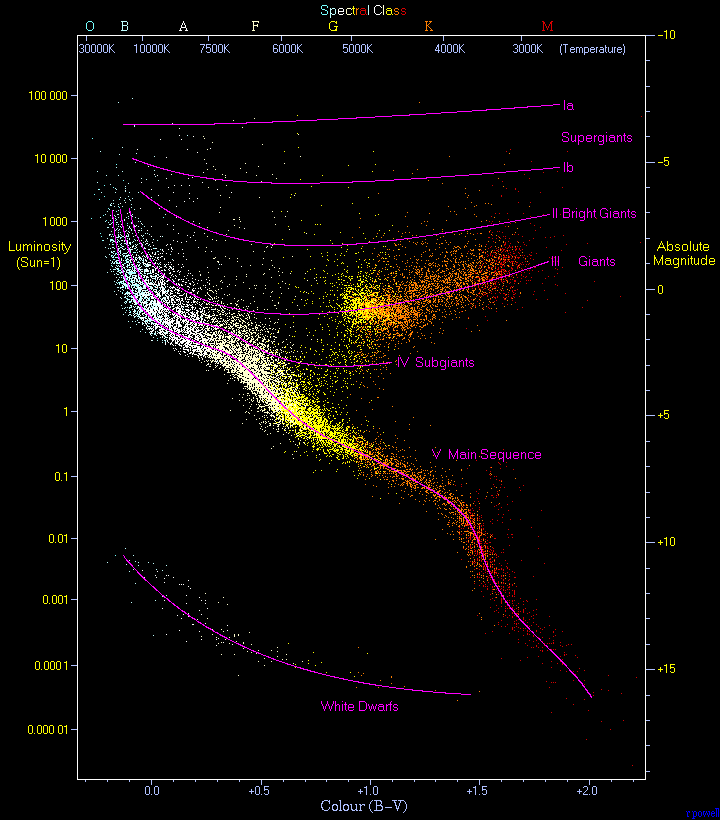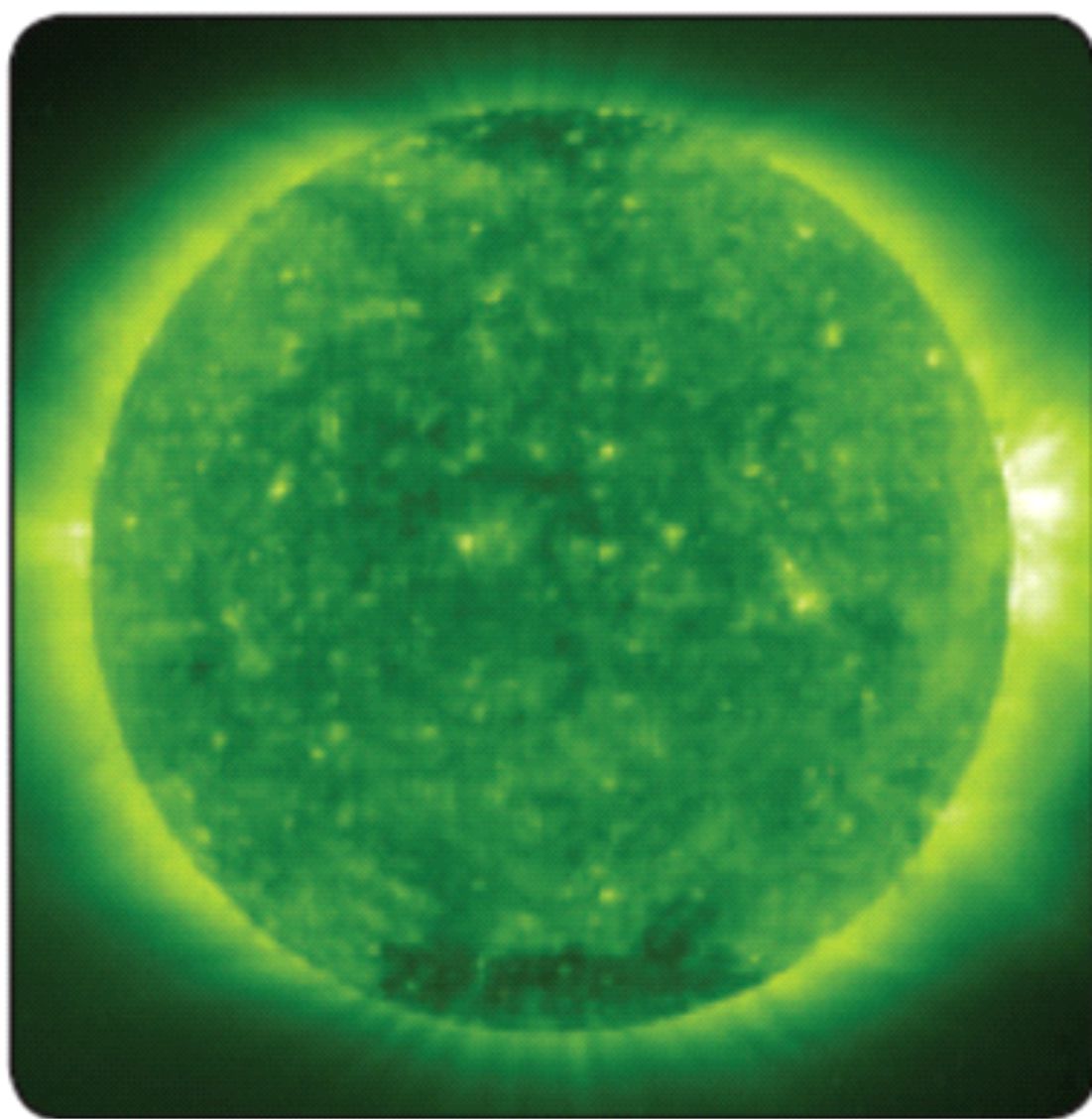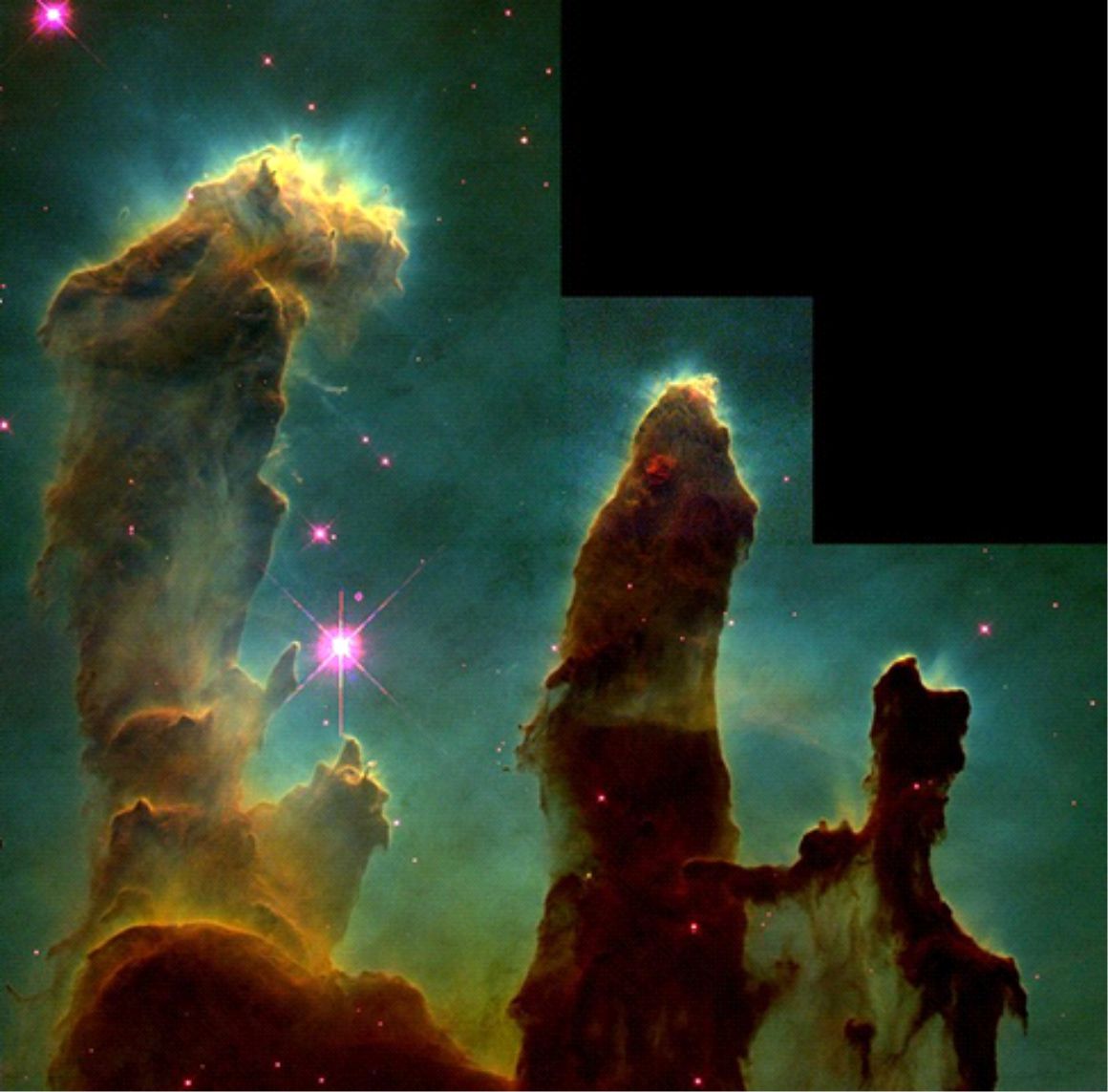Introduction
Astrophysics is a branch of Astronomy that provides human with the knowledge of nature and physical properties of a celestial objects, such as our very own star closets to us, the Sun, other stars, nebulae, galaxies, and other planets. Astrophysics science uses the knowledge and tools/technologies of astronomy and physics together with chemistry to study the nature and formation of the celestial objects and other objects in the Universe.
Astrophysics enables human to understand the type of substances the objects of the universe were formed from, including type of substances the man – himself was formed from.
Definition
Astrophysics is the branch of astronomy that applies the principles of physics and chemistry to determine the nature of the celestial bodies, rather than their positions or motions in space. Sun, other stars, galaxies, extrasolar planets, the interstellar medium and the cosmic microwave background, were among the objects studied by Astrophysics. Emissions from these objects are examined across all parts of the electromagnetic spectrum, and the properties examined include luminosity, density, temperature, and chemical composition. Astrophysics is the science of physical processes in the cosmos. Astrophysics uses data gathered by astronomers using telescopes on Earth and in space – combined with the laws and theories of physics and chemistry – in order to interpret the universe around us. For example, an astronomer might spend nights at the telescope gathering data on a star. Putting on his or her astrophysicist hat – and depending on which instruments were used in conjunction with the telescope (photometers or spectrometers, for example) – that scientist would then turn to the laws of physics to understand how that star produces its energy, whether it has a companion (or perhaps planets, or perhaps an encircling disk), and how the star moves through space.
Astrophysicists apply concepts and methods from many disciplines of physics, including classical mechanics, electromagnetism, statistical mechanics, thermodynamics, quantum mechanics, relativity, nuclear and particle physics, and atomic and molecular physics. Ultimately, astrophysics is a tool that helps humanity understands its place in the cosmos.
CLASSIFICATION OF ASTROPHYSICS
Just like Astronomy, astrophysics was also classified into two (2) broad categories. These are, Observational and Theoretical astrophysics.
Observational Astrophysics
Observational astrophysics is a division of the astronomical science that is concerned with recording and interpreting data. It is the practice of observing celestial bodies by using telescopes and other astronomical apparatus. The majority of astrophysical observations are made using the electromagnetic spectrum technologies, such as in:
- Optical astronomy was the earliest kind of astronomy. Telescopes paired with a charge-coupled device or spectroscopes are the most common instruments used. The Earth's atmosphere interferes somewhat with optical observations, so adaptive optics and space telescopes are used to obtain the highest possible image quality. In this wavelength range, stars are highly visible, and many chemical spectra can be observed to study the chemical composition of stars, galaxies and nebulae.

Cutaway diagram of the Hubble Space Telescope
Credits: NASA's Goddard Space Flight Center
- Radio astronomy studies radiation with a wavelength greater than a few millimeters. Some areas of study are radio waves, usually emitted by cold objects such as interstellar gas and dust clouds - the cosmic microwave background radiation which is the redshifted light from the Big Bang - pulsars, which were first detected at microwave frequencies. Though, the study of these waves requires very large radio telescopes.
- Infrared astronomy studies radiation with a wavelength that is too long to be visible to the naked eye but is shorter than radio waves. Infrared observations are usually made with telescopes similar to the familiar optical telescopes. Objects colder than stars (such as planets) are normally studied at infrared frequencies.
- Ultraviolet, X-ray and gamma ray astronomy study very energetic processes such as binary pulsars, black holes, magnetars, and many others. These kinds of radiation do not penetrate the Earth's atmosphere well. There are two methods in use to observe this part of the electromagnetic spectrum - space-based telescopes and ground-based imaging air Cherenkov telescopes (IACT).

MAGIC, a Cherenkov telescope in operation on the Canary island of La Palma. On foggy nights, the lasers that are used to focus the mirrors can be seen.
Credit: By The MAGIC Telescope at night by Robert Wagner, Attribution, https://commons.wikimedia.org/w/index.php?curid=3938912
Other than electromagnetic radiation, few things may be observed from the Earth that originates from great distances. A few gravitational wave observatories have been constructed, but gravitational waves are extremely difficult to detect. Neutrino observatories have also been built, primarily to study our Sun. Cosmic rays consisting of very high energy particles can be observed hitting the Earth's atmosphere.
Observations can also vary in their time scale. Most optical observations take minutes to hours, so phenomena that change faster than this cannot readily be observed. However, historical data on some objects is available, spanning centuries or millennia. On the other hand, radio observations may look at events on a millisecond timescale (millisecond pulsars) or combine years of data (pulsar deceleration studies). The information obtained from these different timescales is very different.
Observational astrophysics has a special place for studying our very own Sun. Due to the tremendous distance of all other stars, the Sun can be observed in a kind of detail unparalleled by any other star. Our understanding of our own Sun serves as a guide to our understanding of other stars.
The discussion of how stars change, or stellar evolution, is often modeled by placing the varieties of star types in their respective positions on the Hertzsprung–Russell diagram, which can be viewed as representing the state of a stellar object, from birth to destruction.

Hertzsprung–Russell diagram. A plot of luminosity (absolute magnitude) against the colour of the stars ranging from the high-temperature blue-white stars on the left side of the diagram to the low temperature red stars on the right side. "This diagram is a plot of 22000 stars from the Hipparcos Catalogue together with 1000 low-luminosity stars (red and white dwarfs) from the Gliese Catalogue of Nearby Stars. The ordinary hydrogen-burning dwarf stars like the Sun are found in a band running from top-left to bottom-right called the Main Sequence. Giant stars form their own clump on the upper-right side of the diagram. Above them lie the much rarer bright giants and supergiants. At the lower-left is the band of white dwarfs – these are the dead cores of old stars which have no internal energy source and over billions of years slowly cool down towards the bottom-right of the diagram."
Credit: By Richard Powell - The Hertzsprung Russell Diagram, CC BY-SA 2.5, https://commons.wikimedia.org/w/index.php?curid=1736396
Theoretical Astrophysics
Theoretical astrophysics was mainly concerned with finding out the measurable implications of physical models. Theoretical astrophysicists use a wide variety of tools which include analytical models and computational numerical simulations. Each has some advantages. Analytical models of a process are generally better for giving insight into the heart of what is going on. Numerical models can reveal the existence of phenomena and effects that would otherwise not be seen.
Theorists in astrophysics endeavor to create theoretical models and figure out the observational consequences of those models. This helps allow observers to look for data that can renounce a model or help in choosing between several alternate or conflicting models. Theorists also try to generate or modify models to take into account new data. In the case of an inconsistency, the general tendency is to try to make minimal modifications to the model to fit the data. In some cases, a large amount of inconsistent data over time may lead to total abandonment of a model.
Some of the areas studied by theoretical astrophysicists include stellar dynamics and evolution - galaxy formation and evolution – magnetohydrodynamics - large-scale structure of matter in the universe - origin of cosmic rays - general relativity and physical cosmology, including string cosmology and astroparticle physics. Astrophysical relativity serves as a tool to gauge the properties of large-scale structures for which gravitation plays a significant role in physical phenomena investigated and as the basis for black hole and the study of gravitational waves.
Sun’s behavior (Solar Astrophysics)
The star closest to Earth, our Sun, offers the opportunity to make detailed observations of the exterior and interior of a typical star in its mid-life phase. In addition, the Sun offers a natural laboratory for the study of plasmas (high-temperature gases in which atoms have been stripped of their electrons) that are influenced by magnetic fields.
From the details of the Sun’s behavior, it can raise questions about key processes within stars: How do they generate energy through nuclear fusion at their centers? How does that energy pass through hundreds of thousands of kilometers of surrounding layers of gas? How does that energy, released in the form of highly energetic particles and ultraviolet and infrared light waves, affect Earth and the Sun’s other planets?
Careful study of the Sun’s output of energy as different types of radiation will improve our knowledge of these processes. Better ground-based solar telescopes can reveal conditions on the Sun’s surface at scales of distance as small as 70 kilometers - an important scale because the Sun’s atmospheric pressure and temperature change noticeably over distances this small. Other solar phenomena, including the temporary cool and dark regions called sunspots, and the violent outbursts visible at and above the Sun’s surface, have their origin below the visible layers of the Sun. With specialized instruments, it can deduce the conditions that exist below the surface layers and determine how these transient events arise and develop.

An X-Ray image of a Sun
The closest star to us, the Sun, continues to pose some difficult questions. How can the solar surface, with temperatures of only about 10,000 degrees Fahrenheit, produce the much hotter chromosphere above it and, above the chromosphere, the still hotter solar corona, where the temperature rises to a million degrees or more? How do the boiling motions in the outer layers of the Sun concentrate magnetic energy? What governs the sudden release of this energy as huge coronal mass ejections and solar flares?
These outbursts eject huge numbers of electrons, protons, and other charged atomic nuclei, which disrupt the patterns of Earth’s magnetic field when they reach us a few days later.
Understanding the details of the Sun’s behavior has important applications for both short and long-term weather forecasting. In addition, solar outbursts disrupt radio, television, radar, and power transmission and create a danger for astronauts; changes in the Sun’s energy output, even at a modest level, produce long-term, still poorly understood climate changes on Earth. To the extent that we can better understand how the Sun and its outbursts work, we can take steps to better protect ourselves and our planetary environment.
Some Significant Events in Astrophysics
Since the only way astronomers interact with distant objects is by observing the radiation they emit, much of astrophysics has to do with deducing theories that explain the mechanisms that produce this radiation, and provide ideas for how to extract the most information from it. The first ideas about the nature of stars emerged in the mid-19th century from the time maturity of science of spectral analysis, which means observing the specific frequencies of light that particular substances absorb and emit when heated. Spectral analysis remains essential to the gathering of space sciences, both guiding and testing new theories.
Early spectroscopy provided the first evidence that stars contain substances also present on Earth. Spectroscopy revealed that some nebulae are purely gaseous, while some contain stars. This later helped cement the idea that some nebulae were not nebulae at all — they were other galaxies!

The "Eagle Nebula Pillars of Creation". Evidence from the Spitzer Telescope suggests that the pillars may already have been destroyed by a supernova explosion, but the light showing us the destruction will not reach the Earth for another millennium.
Credit: By Credit: NASA, Jeff Hester, and Paul Scowen (Arizona State University) - http://hubblesite.org/newscenter/newsdesk/archive/releases/2003/34/image/ a, Public Domain, https://commons.wikimedia.org/w/index.php?curid=129538
In the early 1920s, Cecilia Payne discovered, using spectroscopy, that stars are predominantly hydrogen - at least until their old age. The spectra of stars also allowed astrophysicists to determine the speed at which they move toward or away from Earth. Just like the sound a vehicle emits is different moving toward us or away from us, because of the Doppler shift, the spectra of stars will change in the same way. In the 1930s, by combining the Doppler shift and Einstein's theory of general relativity, Edwin Hubble provided solid evidence that the universe is expanding. This is also predicted by Einstein's theory, and together form the basis of the Big Bang Theory.
Also, in the mid-19th century, the physicists Lord Kelvin (William Thomson) and Gustav Von Helmholtz speculated that gravitational collapse could power the sun, but eventually realized that energy produced this way would only last 100,000 years. Fifty years later, Einstein's famous E=mc2 equation gave astrophysicists the first clue to what the true source of energy might be - although it turns out that gravitational collapse does play an important role. As nuclear physics, quantum mechanics and particle physics grew in the first half of the 20th century, it became possible to formulate theories for how nuclear fusion could power stars. These theories describe how stars form, live and die, and successfully explain the observed distribution of types of stars, their spectra, luminosities, ages and other features.
According to the Big Bang Theory, the first stars were almost entirely hydrogen. The nuclear fusion process that energizes them smashes together hydrogen atoms to form the heavier element helium. In 1957, the husband-and-wife astronomer team of Geoffrey and Margaret Burbidge, along with physicists William Alfred Fowler and Fred Hoyle, showed how, as stars age, they produce heavier and heavier elements, which they pass on to later generations of stars in ever-greater quantities. It is only in the final stages of the lives of more recent stars that the elements making up the Earth, such as iron (32.1 percent), oxygen (30.1 percent), silicon (15.1 percent), are produced. Another of these elements is carbon, which together with oxygen, make up the bulk of the mass of all living things, including us - human beings.
Thus, astrophysics tells us that, while we are not all stars, we are all stardust.
The knowledge of Astronomy combined with the knowledge of Physics has helped human in understanding how the nature, physical processes, and substances that the stars and other celestial bodies are formed. The astrophysics reaffirms to us that human being were formed from a dust of stars - such as iron, oxygen, silicon, carbon, hydrogen, and helium. Also, the science of astrophysics helps enable human to understand and gains more insight on the processes and formation of a celestial bodies.
REFERENCES
- NEIL D. T. (May, 2017.) Astrophysics for People in a Hurry
- Astrophysics: WIKIPEDIA (https://en.wikipedia.org/wiki/Astrophysics) Retrieved on 20th February, 2020.
- Andy B. (January, 2020.) What is astrophysics? EarthSky: (https://earthsky.org/space/definition-what-is-astrophysics) Retrieved on 20th February, 2020.
- Ariel B. (December, 2017.) What is Astrophysics? Space.com: (https://www.space.com/26218-astrophysics.html) Retrieved on 20th February, 2020.
- National Academy of Sciences: Astronomy and Astrophysics in the New Millennium National Academy Press Washington, D.C. - an overview. 2001.
